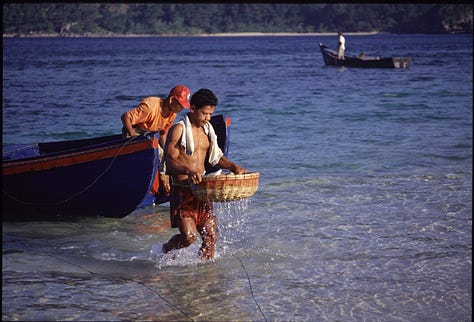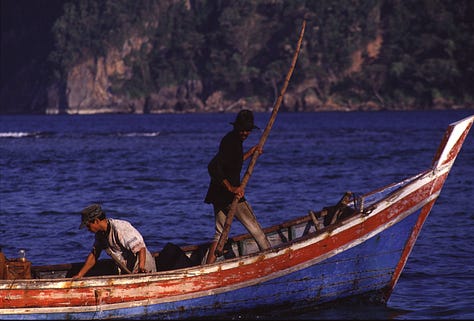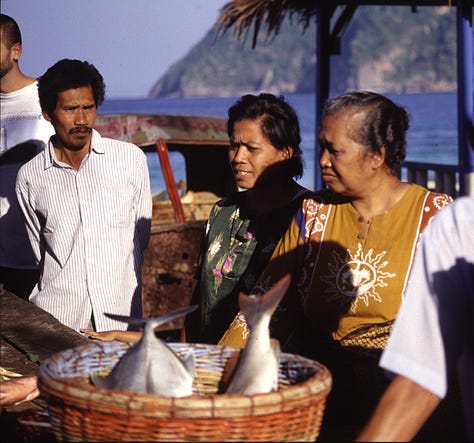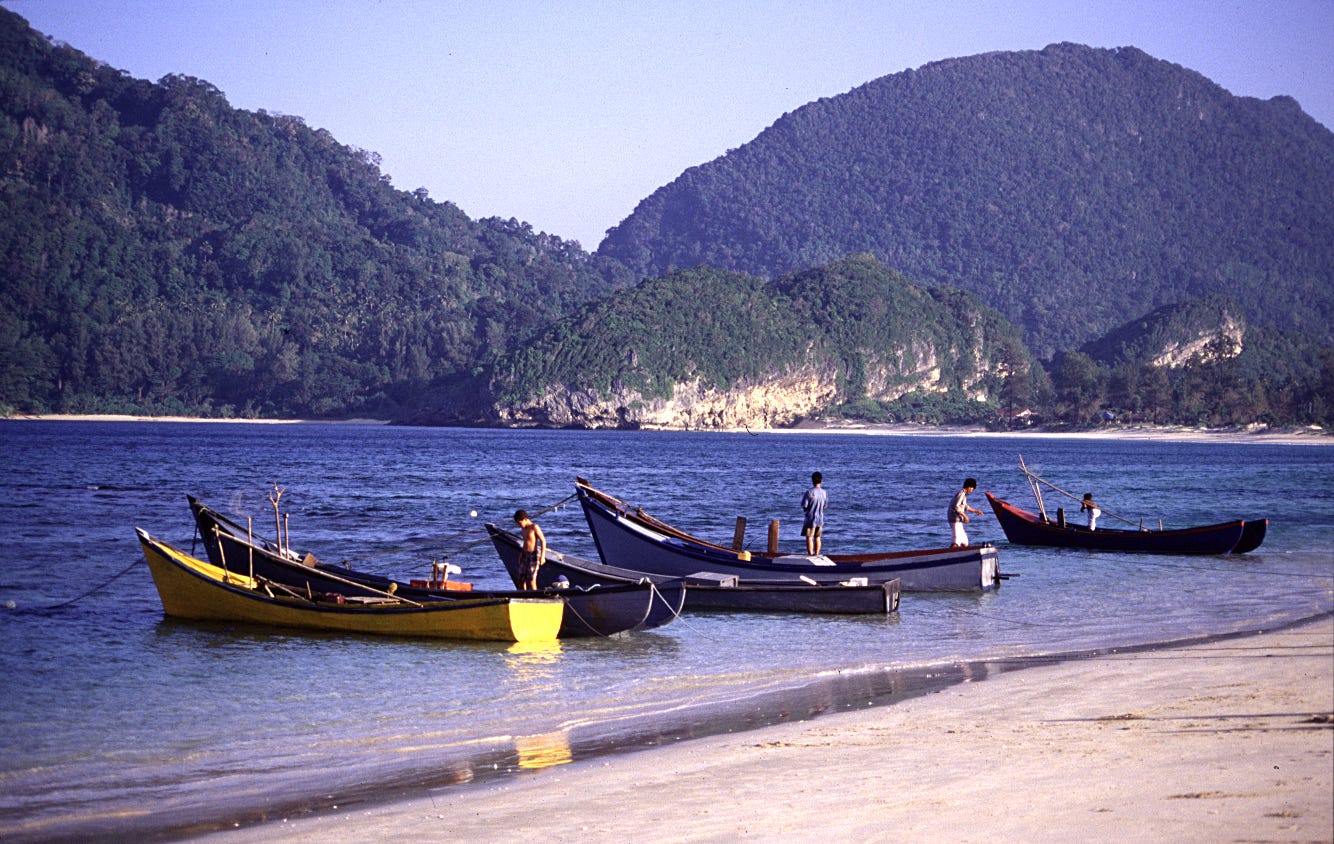I’m writing this on Boxing Day, 2024. I happened to be sorting through old slides and realized we’ve passed twenty years since the 2004 tsunami.
These photos were taken on our favorite beach in Aceh, the Indonesian province on the tip of Sumatra, where 170,000 Acehnese lost their lives in the space of a few minutes. Half a million made homeless in an instant.






In January 1999, James and I spent a week here in a simple hotel, a rare break from teaching English in West Sumatra.
In 2002, we left Indonesia and have not returned. Like most of the world, we watched the horrors of destruction from afar. Satellite images showed this beach specifically before and after the impact. It essentially disappeared.
I spent three days searching Indonesian message boards looking for news on Tapaktuan, our town in West Sumatra. I finally learned that, although the epicenter of the 9.2 earthquake was right off of that coast, and a van had been swept off of a bridge, for the most part, our old town was spared.
My father-in-law scrambled to sell his medical practice and flew to Banda Aceh, then Simeulue, the island closest to the epic center. There, he spent several weeks doing what he could to treat injuries. He returned several times over the following year, bringing other family members and friends with medical skills. In-country friends ran heavy equipment, digging and filling mass graves as fast as possible in the tropical heat. We heard that a young neighbor from Tapaktuan had been studying in Banda Aceh and out raced the debris wave on her scooter.
In the subsequent years, Aceh changed. The guerrilla efforts were undone. Much of their support came from Meulaboh, a town squeezed between the Indian Ocean and the Barisan Mountains that run the length of Sumatra, where eighty percent of the population was wiped out in a moment. A peace accord was signed and Aceh given greater autonomy. Already conservative, the practice of Sharia has increased along with internet connectivity and smart phones.
In the West, it seemed the post-tsunami focus was on Thailand, where 5,400 people were killed—likely because western tourists were caught up in the tragedy there and news viewers would more likely have some point of reference for Phuket rather than the unfamiliar land of Aceh.
I have no idea what became of the people in my photos, seen here going about their lives as we all do, oblivious to what comes next.
I’ve been thinking a lot about separating the beauty from the horror of the world, the blessing from the curse, the innocent from the tragic.
By now we’ve all experienced a brilliant blue September morning, only to later think, “if I’d only known”. On any day, what tragedy, horror, diagnosis, or hard decision lurks just ahead?
If you are a theist, you must eventually grapple with the Problem of Evil. If there were easy answers, the philosophers would not have written great tomes on the subject. In seminary, I’m sure we reviewed all the angles in our Systematic Theology class, but I don’t remember much of the theories.
I do know I recently reached for C. S. Lewis’s The Problem of Pain, last read in the mid-1980s. His arguments are deep enough without requiring a PhD in philosophy to help me keep my head and heart when the questions assault. In the end, so much is past understanding I must return to the child-like faith and remember David’s declaration, “Yea, though I walk through the valley of the shadow of death, I shall fear no evil: for Thou art with me.” Or with Job and declare, “the Lord gave, and the Lord hath taken away; blessed be the name of the Lord.”
All this would be impossible for me without the conviction of a life after death where death has no longer any sting.
I often think of the people in these photos. I can’t know their fate, but I can commit each day to living with an eternal perspective. I can choose to live each moment to the fullest, trusting the future to Providence and for the grace to face each challenge as it comes because “my cup runneth over. Surely goodness and mercy shall follow me all the days of my life: and I will dwell in the house of the LORD for ever.”






Tough memory, but beautiful tribute!